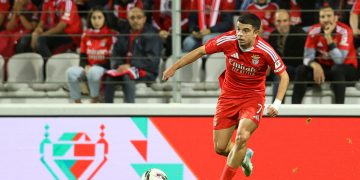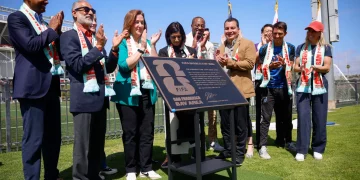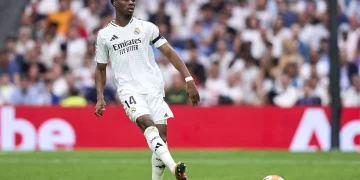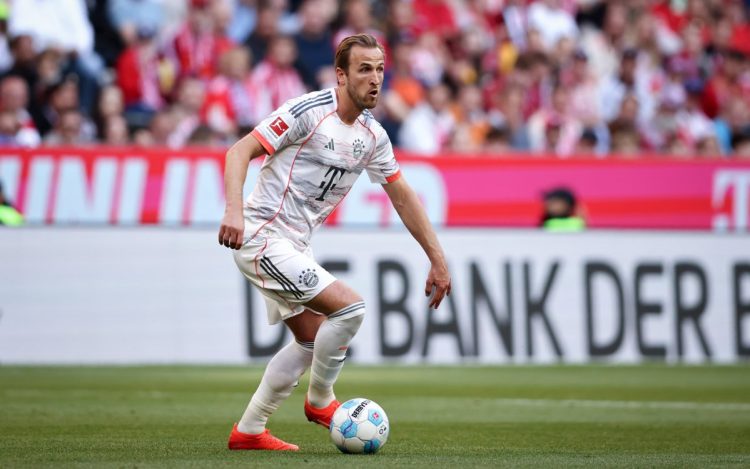The New 32-Team Structure and Its Effect on Competitive Balance
The FIFA Club World Cup is no longer a compact, week-long event tucked away in December. With the 2025 expansion to 32 teams and a month-long summer slot, it is poised to become one of the most influential tournaments in world football. This change is not just about more games or greater visibility; it marks a shift in how global football will be structured, marketed, and experienced in the coming decades.
The new format mirrors the FIFA World Cup model: eight groups of four clubs, followed by a knockout stage. The selection of teams, based on continental performance over four years, aims to ensure competitive quality while spreading representation. But while the design may appear egalitarian on paper, it raises immediate questions about how competitive balance will be maintained. European clubs, backed by larger budgets, more advanced sports science, and deeper squads, dominate the qualification list. UEFA’s 12-team quota dwarfs other regions: Africa and Asia receive only four each, South America gets six, and North America four, with one team each from Oceania and the host country.
Critics argue that this imbalance will create a bloated Champions League with global branding, where elite European clubs extend their dominance and commercial reach. Supporters, however, see an unprecedented chance for clubs from emerging football nations to test themselves at the highest level, attract new fans, and accelerate domestic league development.
The competitive integrity of the tournament will hinge on two key factors: player fatigue and squad depth. European clubs play more than 50 matches a season; fitting in another six high-intensity games across continents requires load management, rotation systems, and advanced recovery protocols. In contrast, clubs from Asia or Africa may see this as their peak moment of the year and prepare accordingly, which could neutralize the experience gap. The expanded format may bring surprises not because the weaker teams improve drastically, but because stronger ones are stretched too thin.
European vs. Non-European Club Preparations
Preparation philosophies for the 2025 tournament reveal stark contrasts between Europe’s elite clubs and those from other continents. European teams—like Real Madrid, Manchester City, and Bayern Munich—are approaching the tournament like a Champions League final month. Their focus is on maintaining peak performance across domestic, continental, and now global stages. That means preseason adjustments, earlier fitness ramp-ups, and expanded travel logistics planning. Clubs are already hiring specialized analysts and medical staff for U.S.-based operations, given the first expanded edition will be hosted across several American cities.
Non-European clubs, while not matching the spending power or facilities, are viewing the tournament as a golden ticket for brand exposure and scouting relevance. Teams like Flamengo, Al Ahly, Urawa Red Diamonds, and Monterrey are not only bringing top players into camp early but also investing in high-altitude and climate-adapted training centers, understanding that every minute on the global stage is a recruiting pitch to fans, players, and sponsors.

South American sides bring a different tactical intensity, often favoring direct play, physical midfield battles, and set-piece dominance. Their emphasis on team cohesion, forged through domestic rivalry pressure, might prove a tactical advantage against European sides rotating heavily. African teams, with their blend of youth talent and diaspora reinforcements, pose an athletic challenge, while Asian clubs focus more on structured pressing systems and coordinated counters.
In terms of squad readiness, the tournament exposes the gap in bench strength. A European club might bench a €70 million player; a non-European club may struggle to replace an injured starter with similar quality. Yet, it’s precisely this underdog narrative that could drive surprises. The unpredictability lies not in the talent ceiling but in the convergence of hunger, tactical clarity, and opponent complacency.
Early Tournament Surprises and Tactical Trends
The early rounds of the 2025 edition already signal that the expanded Club World Cup may not follow a strictly European script. In one of the group-stage shockers, a K-League side edged out a Spanish club on penalties after neutralizing possession dominance with deep-block defending and lightning-quick counters. In another, an African side stunned a Premier League representative by capitalizing on set-pieces and exploiting a lack of coordination among second-string defenders.
Tactically, the tournament has introduced a range of formations and philosophies that fans rarely see clashing in a single setting. South American clubs have favored 4-2-3-1 with overlapping fullbacks and midfield enforcers, while Asian sides lean toward 3-4-2-1 systems that morph into compact mid-blocks out of possession. European clubs, meanwhile, often start with high-line pressing but have been forced to adapt to unfamiliar rhythms and tactical unpredictability.
Another evolving trend is the use of double pivots to shield central defenders, especially among teams expecting wave-after-wave of attacks. Even smaller clubs are deploying sophisticated zonal marking systems and pressing triggers designed to disrupt European build-up play. Fitness gaps are evident, but they’re often bridged with tactical discipline and emotional intensity.
Substitutions and game management have become critical. Non-European teams are often making earlier changes to protect leads or inject pace, whereas European managers are reluctant to alter rhythm early. This difference has led to contrasting outcomes in matches where momentum shifts in the 60th to 75th minute have defined results.
Refereeing standards and VAR usage, harmonized under FIFA oversight, are leveling the playing field in terms of physicality and time-wasting. However, questions remain about officiating consistency when interpreting subjective incidents like simulation or dissent, especially in high-pressure knockout matches.
Shifting Global Football Narratives
The Club World Cup is no longer just a trophy—it’s now a narrative engine for global football. Clubs are not only judged by their domestic dominance but increasingly by how they perform on a truly international platform. For brands like Chelsea, PSG, or Juventus, a poor showing in the Club World Cup could raise existential questions about squad structure and ambition. For underdogs like Wydad Casablanca or Johor Darul Ta’zim, a group-stage run could spark national euphoria and commercial momentum.
In fan culture, the expanded format is creating new rivalries and storylines. Supporters who previously focused only on domestic or Champions League football are now discovering clubs they had never followed. This fusion of football identities—where a Brazilian team meets a Japanese side in Houston, or a Dutch club battles an Egyptian giant in San Francisco—offers fans a true global spectacle.
Media rights deals are exploding. Broadcasters in Southeast Asia, Africa, and Latin America are devoting prime-time slots to Club World Cup content. Brands are lining up to sponsor teams they wouldn’t normally associate with. From a commercial standpoint, FIFA’s bet on the expanded format is paying off—new fan bases are emerging, and traditional clubs are forced to globalize faster.
Conclusion: A Tournament That Could Redefine the Club Game
The 32-team Club World Cup format isn’t just a new competition—it’s a test of football’s evolving identity. Will global parity rise as smaller clubs grow from experience and exposure? Or will Europe’s big clubs consolidate even more power? Early signs suggest both trends could coexist: European dominance at the top, but more unpredictability in the middle tiers, making group stages genuinely exciting.
What’s clear is that global football dynamics will never be the same. Tactical diversity, commercial globalization, fan engagement, and competitive disruption are now baked into the fabric of top-tier club football. For fans and investors alike, the expanded Club World Cup is not a side event—it’s a central pillar of football’s next chapter.


































Discussion about this post